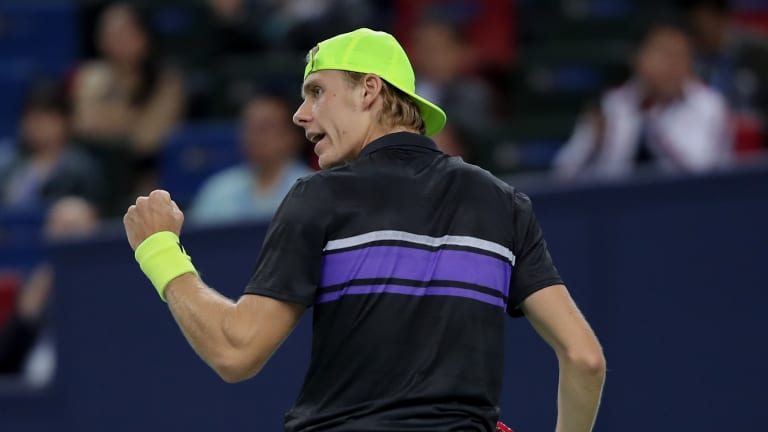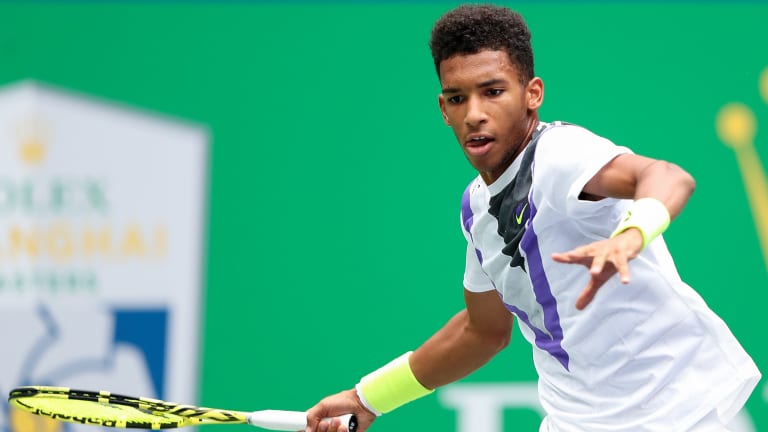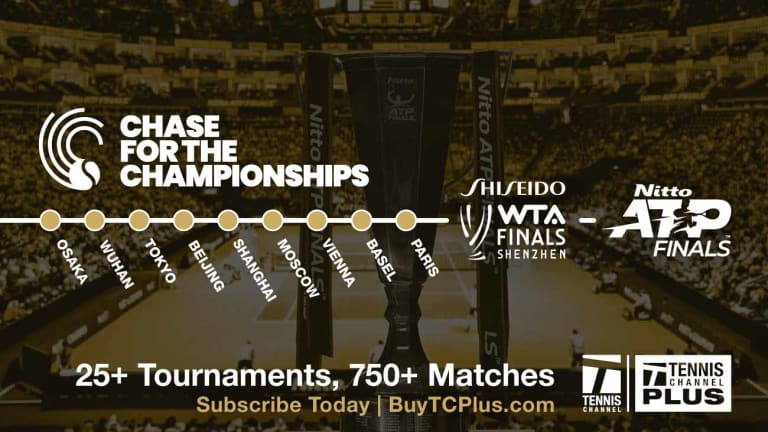ATP Shanghai, China
Shapovalov and Auger-Aliassime: Traveling the bumpy road to top of ATP
By Oct 09, 2019ATP Shanghai, China
Hubert Hurkacz beats Andrey Rublev to claim Shanghai Masters title
By Oct 15, 2023ATP Shanghai, China
Shanghai Final Preview: Hubert Hurkacz or Andrey Rublev to win a second 1000 title?
By Oct 14, 2023ATP Shanghai, China
Hubert Hurkacz serves way into Shanghai final, to meet Andrey Rublev for title
By Oct 14, 2023ATP Shanghai, China
Shanghai Semifinal Previews: Hurkacz vs. Korda; Dimitrov vs. Rublev
By Oct 13, 2023ATP Shanghai, China
Grigor Dimitrov’s semifinal run in Shanghai is a good time to notice he’s having one of his best seasons
Oct 13, 2023ATP Shanghai, China
Andrey Rublev to face friend Grigor Dimitrov in Shanghai Masters semifinals
Oct 13, 2023ATP Shanghai, China
Sebastian Korda rallies to beat Ben Shelton in three sets at the Shanghai Masters
By Oct 12, 2023ATP Shanghai, China
Sebastian Korda holds off "electric" Ben Shelton in Shanghai for first Masters 1000 semifinal
By Oct 12, 2023ATP Shanghai, China
"I'm still here": Grigor Dimitrov topples Carlos Alcaraz for first time in Shanghai
By Oct 11, 2023ATP Shanghai, China
Shapovalov and Auger-Aliassime: Traveling the bumpy road to top of ATP
On Wednesday, both young Canadians fell in the second round of the Rolex Shanghai Masters in China.
Published Oct 09, 2019
Advertising

Shapovalov and Auger-Aliassime: Traveling the bumpy road to top of ATP
© 2019 Getty Images
Advertising

Shapovalov and Auger-Aliassime: Traveling the bumpy road to top of ATP
© 2019 Getty Images
Advertising

Shapovalov and Auger-Aliassime: Traveling the bumpy road to top of ATP